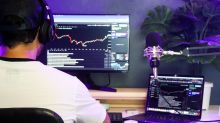| 前收市價 | 10.16 |
| 開市 | 10.16 |
| 買盤 | 0.00 x 1000 |
| 賣出價 | 10.94 x 800 |
| 今日波幅 | 10.16 - 10.94 |
| 52 週波幅 | 9.95 - 27.65 |
| 成交量 | |
| 平均成交量 | 3,943,717 |
| 市值 | 3.343B |
| Beta 值 (5 年,每月) | -0.34 |
| 市盈率 (最近 12 個月) | 546.50 |
| 每股盈利 (最近 12 個月) | 0.02 |
| 業績公佈日 | 2024年6月05日 - 2024年6月10日 |
| 遠期股息及收益率 | 無 (無) |
| 除息日 | 2019年3月14日 |
| 1 年預測目標價 | 5.67 |
 Insider Monkey
Insider Monkey11 Most Popular Stocks on Robinhood in 2024
In this article, we will take a detailed look at the 11 Most Popular Stocks on Robinhood in 2024. For a quick overview of such stocks, read our article 5 Most Popular Stocks on Robinhood in 2024. Amid rising inflation and economic uncertainty, millions of young Americans are starting to invest in different asset classes to secure their future […]
 InvestorPlace
InvestorPlaceRate Cut Rockets: 3 Stocks to Soar When Interest Rates Fall
Risk-on! The stock market is widely expected to takeoff like a rocket once the U.S. Federal Reserve finally begins lowering interest rates. If that happens, investors’ risk appetite is sure to increase, with certain stocks catapulting higher as a result. The last time markets got frothy in 2021, it led to record high prices for crypto, the meme stock craze, and a resurgence of public stock offerings through special purpose acquisition companies (SPACs). What is likely to happen this time once in
 InvestorPlace
InvestorPlaceApril Price Target Cuts: 3 Stocks That Analysts Are Losing Faith In
With all the turbulence in the stock market at this time, it’s imperative to consider theimpact of analyst downgrades to minimize risk. Following a momentous AI-powered rally in the past year or so, the market’s taking a breather. Moreover, with inflation coming in hot this month again, expect the stock market to shed more of its gains in the near term. Hence, with all the uncertainty, investors must consider price target cuts from Wall-Street. With that said, here are three stocks with analyst